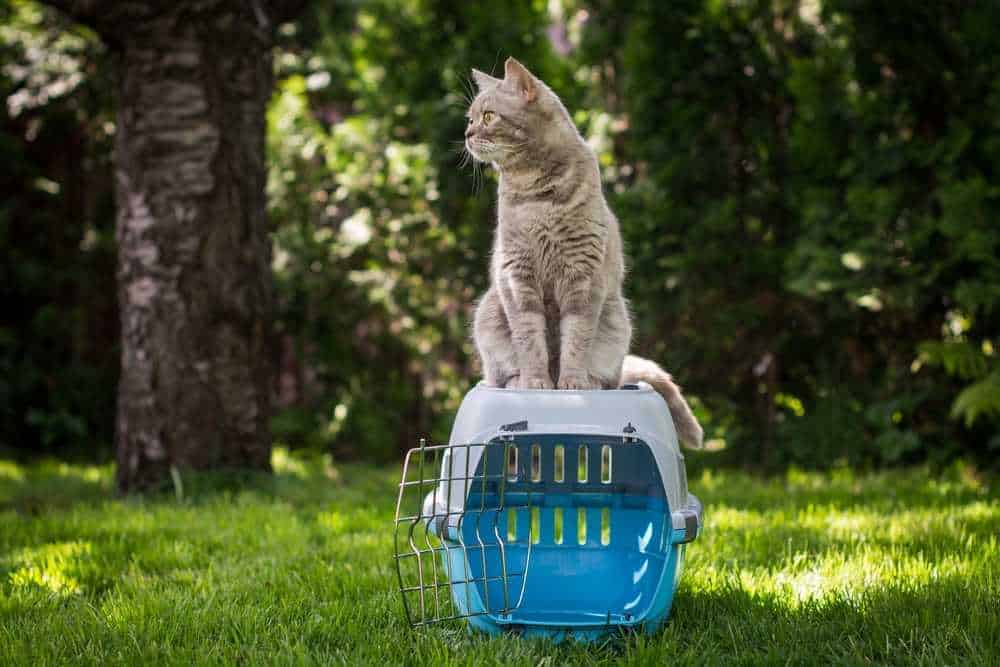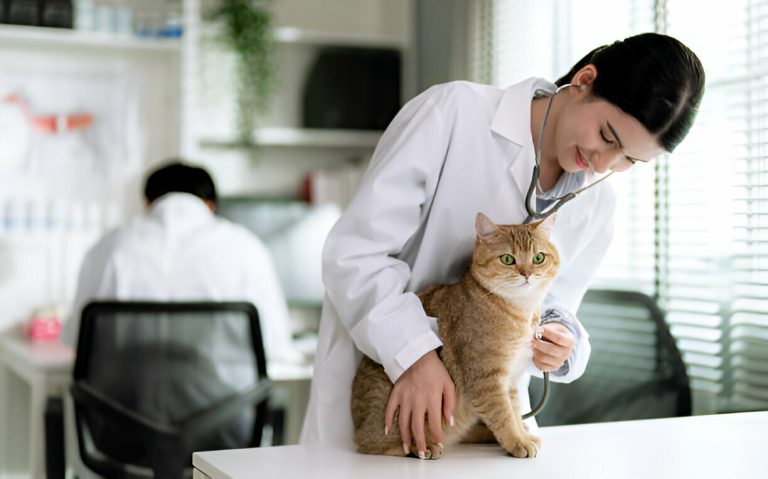A Cat Carrier: How to Train Your Cat to Use?

A carrier is important not just for bringing your kitty home but for taking her places such as to the veterinarian’s office and on trips. You will also need a carrier if you and your cat must leave home in a hurry for any reason.
Whatever the reason, kitty will have to be contained in a comfy carrier when she goes out, and you want it to be well constructed and safe. Domestic cats spend about 70 percent of their day sleeping.
Many people just use the cardboard carrier in which they’ve brought kitty home from the shelter. But these carriers do not stand up to use over time. It’s best to buy your cat a sturdy carrier that will last her a lifetime. The better the carrier you invest in, the longer it will last.
A cheap one will have to be replaced sooner, which means you will have to pay twice for the same item. The carrier you buy should be sturdy, and it shouldn’t tip over or have canvas sides that sag inward. Check to see that the zipper that closes it can’t be easily opened with a paw. Cats are very clever about opening zippers and squirming out of small places.
Check to see that the stitching is uniform and won’t separate. The material from which it’s made should be safe and strong; check that first, and then you can think about the color and/or design that suits your taste. The carrier should also have good ventilation. Hard plastic carriers are mainly used for shipping animals and must be airline approved.
They’re a bit more awkward to carry. Many rescue groups use them as well. But for your purposes, a good, canvas carrier with sides that don’t sag will suit you and your kitty quite well.
These Maine Coon Cats are in a great carrier: It’s strong and lightweight and ribbed across the top, so the fabric doesn’t collapse in on the cat. While it’s true that cats prefer to be in their home, there are also cats who enjoy the adventure of traveling with their people. If you’re one of those people who will take kitty along on vacations or other trips, you will want to buy a carrier that will fit underneath an airplane seat without collapsing on kitty. Yes, such carriers do exist.
There is at least one company that makes a carrier that is so lightweight that all you feel is the weight of the cat! A small, hard plastic carrier will also do for trips to the veterinarian and should fit under an airplane seat — despite the fact that there seems to be less room on planes than ever before.
But know that even with a nice soft crate pad or towel, it still won’t be as comfy as some other carriers that are soft-sided and weigh less. The soft-sided carrier will often have a shoulder strap to allow for more comfortable traveling if, as usually happens to me, your plane leaves from the very last gate.
The carrier should be a pleasant place for kitty. Kitty should feel safe in the carrier and away from the noise and hubbub of the airport terminal. Always have a cat carrier easily accessible and teach your cat that it’s a fun place to be before she needs to go in for an emergency.
Get kitty accustomed to the carrier by having a comfy mat inside (some carriers come with a nice one), a toy or two, and a treat. Leave the door or flap open and, especially if you plan to fly with kitty, keep it near your feet. Don’t forget that this will be her main view during a flight! Let her wander in and out and nap in it. Occasionally close it and then open it while she’s inside.
She’ll gradually become acclimated to it and will view her carrier as a safe haven. You can experiment with taking her out for short periods — trips to nowhere. And you can take her for car rides in the carrier. You might also think about buying a harness and leash for your kitty for trips to the veterinarian or elsewhere. When you go through airport security, you have to hold your cat while the carrier goes through the X-ray machine.
You may think kitty is calm and will be fine in your arms, but it only takes one loud sound or sudden movement to startle a cat enough to escape, even from the safety of your embrace. You need to know that kitty is safe outside your home, and a harness and leash will provide that. Do not use a collar to walk your cat.
Cat collars are made to break open if the collar gets caught on something so the cat won’t choke to death. They’re fine as a place to hang kitty’s ID tags, but for walks nothing less than a harness will do. This is all the basic equipment that kitty will need. So plan on a shopping spree before bringing your cat home.






